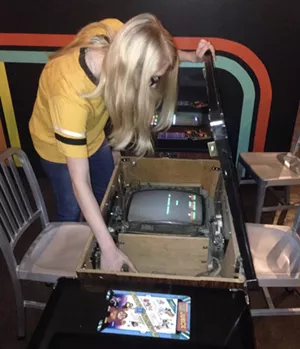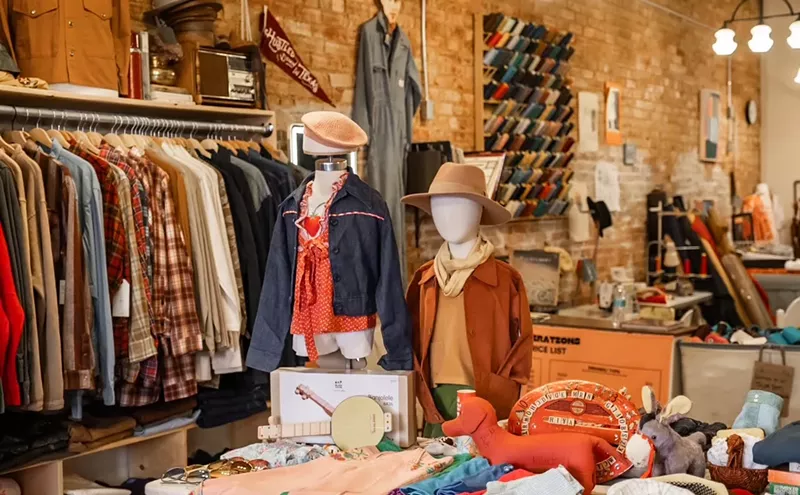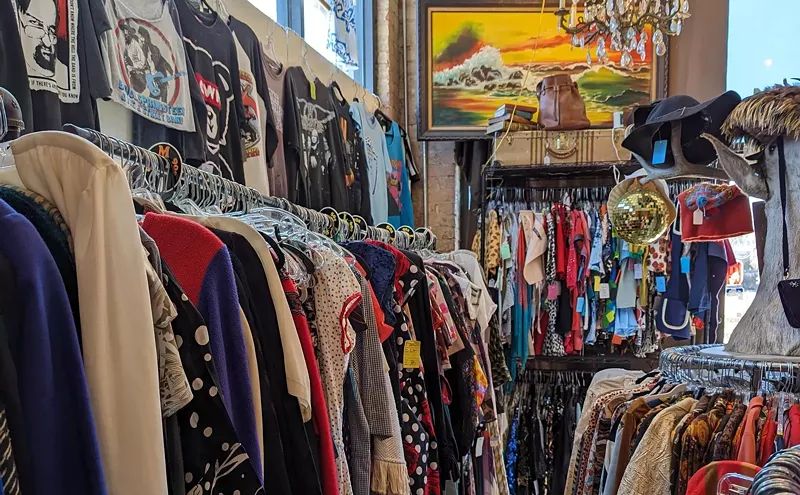Corey Hyden, the owner of Free Play Arcade in Richardson, who's been collecting arcade games since before he opened for business in 2015, says he's been stockpiling CRT monitors to prepare for the shortage. He estimates that he replaces more than 20 monitors every year in his arcade from his collection of more than $100,000 worth of monitors, although "it could easily be more given how prices are going."
"One of the very first things I realized getting into this business is that CRTs aren't going to make it," Hyden says. "So we've been actively buying every one we can."
David Stoner, the owner of the Arcade Factory game wholesaler in North Richland Hills, has entire "racks from the floor to the ceiling" filled with old fashioned CRTs of all sizes but he doesn't think the shortage will leave a dent in his business. He says he gets orders for machines from arcade purists who want the authentic, original look and other collectors who don't mind having one with a cheaper liquid crystal display (LCD) screen instead.
"It will never have that look, that crispness or pop of explosions that the originals had."
tweet this
"It's just like when we stopped putting lead in paint or lead in gasoline when we understood how it works and that there's another way out there," Stoner says. "It's not going to kill my company. I'm not going to lose a sale from it. I think people will make peace with the transition."
Rusty Nunnelee, a private collector who keeps several arcade and pinball machines in his home in McKinney, says he also saw the shortage coming, but he's not worried about the effect it could have on his ability to play video games the old-fashioned way.
"When LCD televisions started replacing CRTs, most people in the hobby knew the end was near for arcade CRT monitors as well," Nunnelee says. "Some people started buying new ones and stockpiling them. The funny thing is those new monitors were of inferior quality compared to ones installed inside the games when they were originally made. Remember last year when it was announced the very last VCR has been manufactured? Those last VCRs were pieces of junk because there wasn't enough money to be made selling high-quality [ones] in 2016. The same applies for CRTs as well. There weren't enough being made anymore so the last factory producing them was doing it as cheaply as possible."

An employee of the Free Play Arcade in Richardson repairs a Tetris cocktail cabinet.
Photo by Danny Gallagher
"Most of the time if it doesn't have a real bad burn, you can rebuild it with a kit, and if you've got a dull screen, there's a machine called a rejuvenator," Graf says.
The CRT monitor consists of two main parts: the monitor tube and the chassis that controls the arcade machine's monitor, and both can be maintained over time, Nunnelee says. "I've read some people speculate that in a home environment with reasonable care, a CRT monitor could last another 50 years."
A shortage of CRT monitors won't keep gamers from enjoying their favorite arcade classics thanks to LCD screens that can replace them, but Hyden says hardcore fans can tell the difference because "they can't reproduce the same black or depth of colors."
"It's any little thing that takes you out of the experience of the original," Hyden says. "We're trying to capture that magic of the early '80s and early '90s arcades and part of that experience is having those games how they are supposed to be and not having ones that are chopped up or using materials that they didn't use back then."
Stoner says using LCDs can be a challenge if the arcade game a customer wants uses technology that interacts with the screen like a light gun. He also tells customers who order custom-made "multicade" cabinets containing a digital library of new and classic arcade games that they might notice a difference in the graphics while playing some of their older favorites on an LCD screen.
"It will never have that look, that crispness or pop of explosions that the originals had," he says. "So if they ask for a multicade, we show them what they're giving up."
Nunnelee says it's not the shortage of CRT monitors that concerns him when it comes to
"Every year, games are destroyed or just thrown away," Nunnelee says. "There are still warehouses with leaky roofs full of old games that operators can't be bothered to go through and sell or they think they are sitting on a gold mine so they refuse every reasonable offer. All the while, the games get worse and worse and will probably end up in a landfill."
The CRT shortage may not be the downfall of the barcade industry, but if you want to experience the games at their peak, you should probably play them now.
"It's definitely something that's eventually going to be a problem," Hyden says. "Even despite spending all those the resources we have to get as many as possible, CRT is going to die. So it's important for people to go to an arcade and experience them now because it's as good as it's ever going to be."













